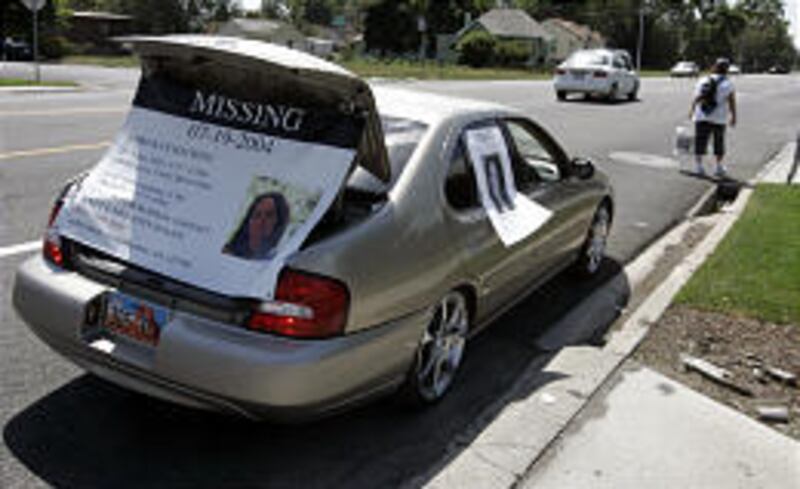Lori Hacking has been missing since July 19. Her tearful family has made widely reported pleas for help in finding her. Police with cadaver dogs have combed the Salt Lake City landfill.
So far, no information has become public regarding where Lori Hacking might be.
But if foul play has occurred, could prosecutors charge anyone with a crime when there is no body to verify the claims? It actually has happened twice in Utah in recent Utah history.
But prosecution under those terms is tough.
Robert Stott, spokesman for the Salt Lake County District Attorney's Office, said he could not talk about anything currently under investigation.
However, hypothetically speaking, Stott said, it is possible to bring homicide charges against someone even if a body hasn't been found. But that is rare and makes the prosecutor's job far more difficult.
"Obviously, one of the things we have to prove is that a person has been killed and is not just missing when talking about a murder case," Stott said. "If you have a body, you know the person is no longer just missing and you usually, through medical examination, determine the method, cause or manner of death. That's why it's so important to have a body.
"Could we prosecute without a body? Yes, but it would be in very exceptional circumstances," Stott said. "We'd want some strong evidence pointing to the fact that the person was actually killed and is not missing."
Even if murder is suspected, could that necessarily be tied to a specific defendant?
"It all depends on the evidence you have," Stott said. "If you have an eyewitness, then you've probably got both who did it and the fact that somebody got killed."
Without an eyewitness, it would be more difficult. And if there is a confession, the confession would have to be found legally sound.
The two homicide convictions in recent Utah history where no body was found include:
Douglas A. Lovell, who now is on death row and going through a series of appeals. He pleaded guilty in 1993 to aggravated murder of Joyce Yost. Prosecutors believe Lovell killed Yost in 1985 to stop her from testifying against him for previous crimes of aggravated kidnapping, aggravated sexual assault and forcible sodomy.
Rudy Matthew Rebeterano, who was found guilty of second-degree felony homicide in connection with what prosecutors believe was the 1981 death of Michael Guy Johnston. An eyewitness saw an altercation between the two men, later saw Rebeterano carrying some kind of large bundle to his car, and there was substantial blood in Rebeterano's car trunk and in an apartment. He has since been released from prison and is no longer on parole.
Veteran defense attorney Fred Metos agrees with Stott that a case without a body could be tried, but much depends on what other evidence prosecutors have.
"Generally, physical evidence from a scene is something the state could use to demonstrate there has been a murder — blood, whether the blood splattered, if there were any attempts to clean it up. Hair samples probably aren't as good. Certainly, a murder weapon would make a case stronger for the state."
Metos said a body essentially becomes part of a crime scene and often a good deal of evidence can be obtained from the victim, especially regarding how a homicide occurred.
"I've even had cases where the injuries to the victim indicate the victim was engaged in a fight beforehand, which was consistent with a self-defense theory on the part of the defendant," Metos said. "It can be evidence that helps the state or the defendant, depending on the circumstances when the homicide occurred."
Beyond that, prosecutors could attempt to use other evidence: information from neighbors, if anyone heard a fight sometime before the victim disappeared, indications of blood or other physical evidence found in a home or car, testimony from others that places a defendant in the same location as the victim.
Even if a body is found, prosecutors have to have enough evidence to indicate a murder took place before charging anyone.
"Part of that would depend on when they find it and the condition of the body," Metos said. "The state's ability to get forensic evidence is remarkable — so much better than when I started 20 years ago."
Metos said forensic science has improved to such a degree that experts can do such things as examine bones and find potential injuries from knives, guns or blunt force that would be undetectable to the naked eye. In the past, they probably would have gone unnoticed.
As far as the disappearance of Lori Hacking, what if her disappearance is never solved or explained?
"That's a potential," Metos said. "The main point people need to keep in mind is that nobody has been charged. The police are doing their job and people need to stay out of their way and let them get their job done."
E-mail: lindat@desnews.com

